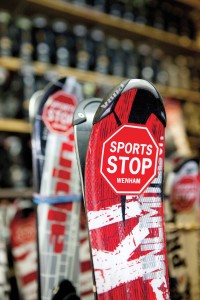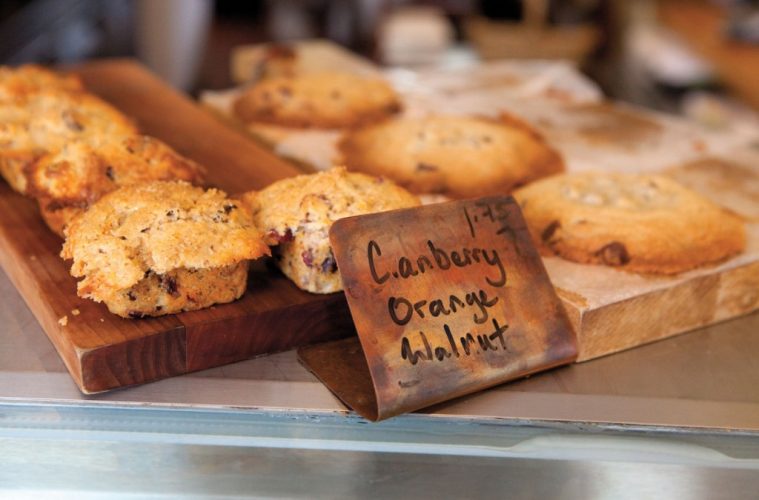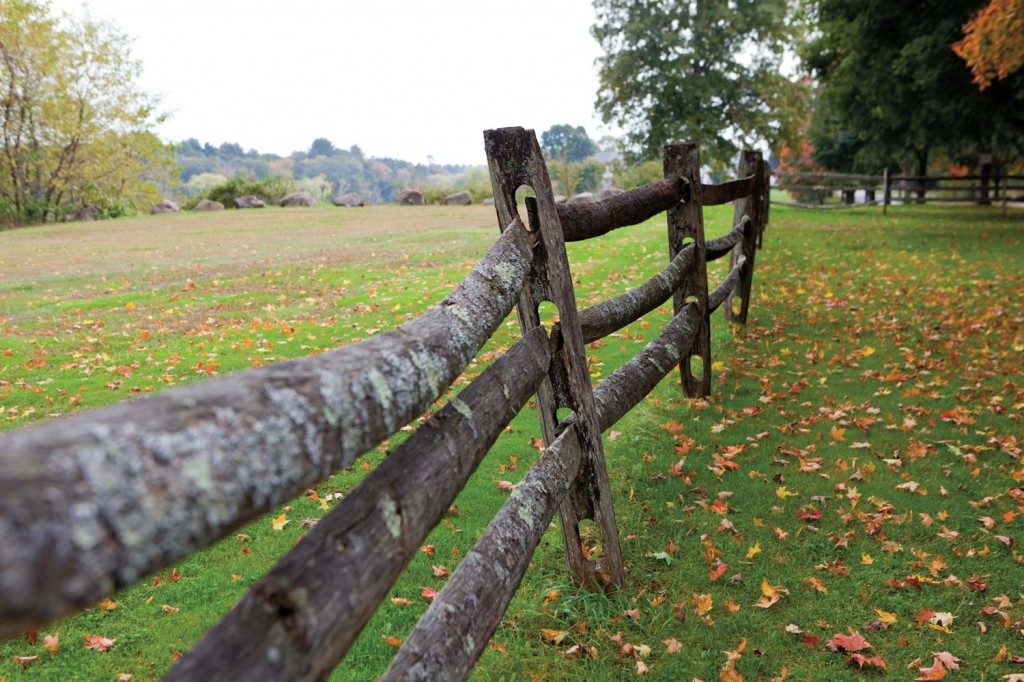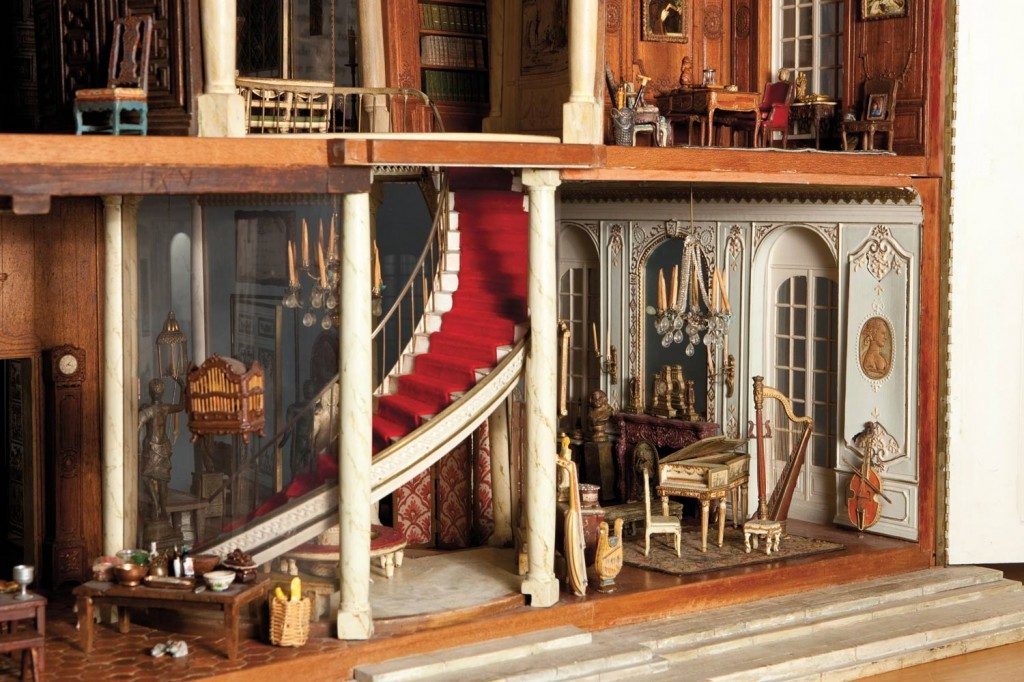Double your pleasure in Hamilton-Wenham.
When we finally stopped laughing at the way our friend, visiting from Los Angeles for the holidays, pronounced “Peabody,” we drove past the road signs for North Shore towns to the north. “Beverly Middleton?” he read aloud. “Who’s Beverly Middleton? And Beverly Hamilton? “And how come all of your cities are named after women named Beverly?” he asked.
What struck us was the fact that Beverly/Hamilton was not ‘Beverly Hamilton-Wenham’ on that sign. After all, the two towns are perpetually linked. It’s Hamilton-Wenham, like they’re conjoined twins, or Brangelina. Frankly, this doesn’t seem fair. Although Hamilton and Wenham share some practical stuff, like a school system, a library, and a T stop, they are two towns. So in the interest of giving each town its due, let’s ponder the question: What is the difference between Hamilton and Wenham?
Maybe history offers a clue. Going way back, Hamilton was initially part of Ipswich, a landscape of farmlands. When the new stagecoach road from Boston to Newburyport (now Bay Road) came through the area in 1640, a village formed around it, attracting English settlers who were likely smitten by the countryside that resembled the farms and estates they’d left behind. In 1714, the village became the Third Parish of Ipswich. Following a court fight, in which petitioners objected to the difficulty of getting to the church in Ipswich, the parish was incorporated as Hamilton in 1793 and named in honor of Alexander Hamilton.
When the Eastern Railroad arrived in 1839, businesses grew up around the depot, where Talbot’s sits now, and this became the center of town. A few years later, in 1859, a Methodist minister’s association held a camp meeting in Asbury Grove. Thousands of people came to Asbury Grove in the summer to hear gospel preaching, enjoy outdoor sports, and take part in plays and music performances.
Across town, things were happening at Gibney Farm. In the 1890s, the Myopia Hunt Club relocated from Winchester to the Hamilton farm. Named in jest for its nearsighted founders, Myopia began as a lawn tennis and baseball club, but eventually shifted its focus to polo, hunting, and golf. Members built large estates in the area.
As for Wenham, English settlers came in 1635, after the Algonquin people who’d lived here for hundreds of years were wiped out by an epidemic (probably smallpox) in the early 17th century. (The Wenham Museum holds artifacts that were found in town, dating back to that time.) Wenham was originally part of Salem. In 1643, the General Court of Massachusetts granted that Wenham should be a separate town. Since many settlers came from Suffolk County in England, it is thought that Wenham was named for two small villages there, Great Wenham and Little Wenham.
Quiet little Wenham got lots of buzz in the 1850s, thanks to its ice business. Hotels around the world bragged that they served genuine Wenham Lake ice. While refrigeration brought an end to that industry, other Wenham enterprises continue to this day. In 1893, the Wenham Village Improvement Society founded the Wenham Tea House & Exchange. The Exchange sold ladies’ handiwork, jams, and jellies. A few years later, in 1921, the society bought the 17th century Claflin-Richards house in the center of town, eventually adding the barn (Burnham Hall) and the museum. These properties, of course, are among the town’s most beloved landmarks.
So, there you have it: two towns, two different stories. And the two towns aren’t twins at all, since Hamilton, settled three years earlier than Wenham, is the older sibling.
To get a more recent perspective, we asked a (totally unscientific) sampling of residents to tell us why their town is unique. Maria Lekakkos, the former Miss Massachusetts who owns M. Lekkakos spa in Wenham, raved about its “rich history, gorgeous green farms, and family-centered community,” adding, “I chose to establish myself and my businesses here because the community works together—they support local businesses, and customers are loyal.” Lekkakos continues, “Downtown Wenham has evolved tremendously over the last four years.” Hamilton boosters are quick to point out the equine-centric, wholesome appeal of their hometown. Newcomer Mark Thompson, CEO of Boston Private Bank & Trust says, “[As] an avid rider, my wife appreciates the rich equestrian history, and I’m looking forward to enjoying all of the services and activities that Hamilton has to offer,” including Hamilton’s “excellent schools, restaurants, and the close-knit sense of community.”
Perhaps real estate agent Betsy Bullock of By the Sea Sotheby’s International Realty puts it best. “People call Hamilton and Wenham ‘sister towns,’ and like most sisters, they look similar on the surface, but each has its own, separate DNA. Each town has its unique charms.”
And each is a dandy place to call “home.”
FEATURE
A Doll’s House
“The House of Lights” brightens Wenham Museum
“Even though there is so much sadness attached to it, there is also much joy,” says Nanine Steglich of Marblehead, referring to Le Pavillon de la Lanterne, the lavish dollhouse her parents created in memory of her sister, Joanna, an art student who died at age 20. Now, that dollhouse is on display at the Wenham Museum, an exquisite re-creation of European life in miniature.
The girls’ parents (now deceased), artists Jean and Marguerite van der Does, spent 11 years on the project, designing the exterior of the house in a 17th century style reminiscent of the hunting lodge of the Palace of Versailles. Inside, each of the seven rooms represents a specific country or period, filled with furnishings that were handcrafted by Jean and Marguerite. They often used wood reclaimed from the family’s country property in New Jersey. Some of the vignettes and decorative pieces are miniature replicas of rooms in the family’s country house as well. “The dollhouse is filled with objects that Joanna had treasured during her brief lifetime,” Steglich explains.
As a work of art, the dollhouse is breathtaking, a miniature fantasy land of parquet floors, Aubusson rugs, murals, a Sevres china tea set, and even small-scale reproductions of masterpiece paintings. The fine detail of the dollhouse is astonishing; look closely and you’ll notice that the fleur-de-lis coat of arms adorning each window is engraved with Joanna’s initials. “The harp, with its tiny strings, the chandeliers with their minute crystals, every statue, wall decoration, and miniature painting were lovingly done in my sister’s memory,” Steglich says.
Her late parents would be “thrilled” that this creation is bringing pleasure to people on the North Shore, Steglich says. “The dollhouse is truly a celebration of life.” Le Pavillon de la Lanterne will be on display at the Wenham Museum’s Egbert Gallery until Aug. 2013. wenhammuseum.org.
WHAT TO DO
Items for your Hamilton- Wenham itinerary.
Appleton Farms
The country’s oldest continuously operating farm is now managed by The Trustees of Reservations. Explore six miles of foot trails and bridle paths, then visit the farm store for fresh milk, eggs, cheese, and beef. 790 Highland Ave., South Hamilton, 978-356-5728; thetrustees. org.
Bradley Palmer State Park
This 721- acre park is a former private estate, graced by a gorgeous Arts and Crafts-style mansion, Willowdale (available for weddings and events). Surrounding acreage boasts trails and old carriage roads that skirt the Ipswich River. Asbury St., Topsfield, 978- 887-5931; mass.gov/dcr/parks/northeast/brad. htm.

Sports Stop
Patton Park
This is the go-to spot for summer concerts and the Two-Town Fourth of July celebration. The centerpiece is a full-size WW II tank, surrounded by tennis courts, a basketball court, baseball fields, a playground, a pool, and a pond that doubles as a skating rink in winter. Bay Rd. at Asbury St., South Hamilton, 978-468-5570; hamiltonma.gov.
Myopia Hunt Club
Watching a Sunday polo match at Myopia is one of the North Shore’s grandest traditions. This private hunt club, founded in 1882, is home to the country’s oldest polo field under continual use. 435 Bay Rd., South Hamilton, 978-468-1402; myopiahunt.com.
Jolie Tea Company
At her independent retail tea shop, Amy Job reveals the world of tea, one leaf at a time. Tea tastings showcase important and domestic teas in myriad varieties. 26 Bay Rd., South Hamilton, 978-468-5654; jolietea.com.
Wenham Tea House
One of America’s oldest tea houses (1912), this local landmark is now operated by Henry’s Fine Foods. Savor the genteel pleasure of afternoon tea, and treat the little ones to a special tea service with Alice in Wonderland. 4 Monument St., Wenham, 978-468- 1398; wenhamteahouse.com.
Grassy Roots
Pop in to this gourmet cafe for a bite of wholesome grub, which including salads, sandwiches, and paninis, plus a menu of juices and smoothies. Ingredients are largely organic and locally grown. 152 Main St., Wenham, 978-468-5200.
Blue Peacock
Home Interior designer Susanne Csongor has filled her showroom with tasteful, intriguing accessories and home furnishings, including an amazing collection of throw pillows. 264 Bay Rd., South Hamilton, 978-468-1228; bluepeacock.com.
Sports Stop
Their “balloon sales” are legendary, and they know everything, from which squash balls to buy to why your skis are so slow. They also offer ski and snowboard rentals. 67 Main St., Wenham, 978-468-4488; sportsstopwenham.com.
Viola Lovely
There was a time when “North Shore style” meant corduroy and crewneck sweaters. No more! Viola Lovely’s owner, Lisa Cancelli, brings high-end fashion to Wenham with lines like Yigal Azrouel, Tom Ford, and Bettye Muller. 148 Main St., Wenham, 978- 468-1775; violalovely.com.



